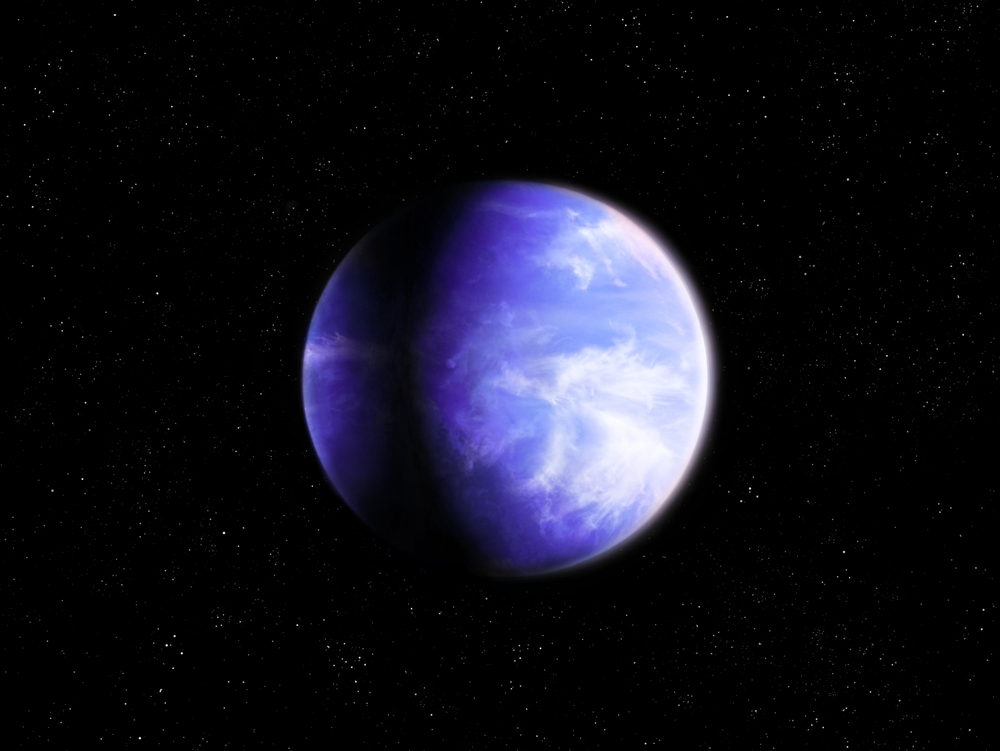The search for Earth-like planets around other stars is one of the great endeavors in modern science. Astronomers have discovered numerous candidates that orbit other stars in the Goldilocks zone where liquid water is likely to exist.
The next step is to study the atmosphere of these exoplanets, looking for evidence that they are Earth-like. The huge distances of these planets, their tiny sizes and the even smaller signatures from their atmospheres make this a horrendously difficult task.
Which is why astronomers are so excited about the James Webb Space Telescope. As the most powerful space observatory ever launched, it has the capability to characterize the atmospheres of exoplanets in the habitable zones of some stars. But it can only do this by spending huge amounts of time gathering the necessary light.
Last year, it provided evidence suggesting that the closest temperate exoplanets, Trappist-1b and Trappist-1c, may have no atmosphere at all.
Light Fantastic
Now evidence from the JWST suggests the second nearest temperate exoplanet, known as LHS 1140b, may have a nitrogen-rich atmosphere, just like Earth’s. The discovery has raised the stakes for astronomers searching for habitable planets, who desperately need more time on JWST to help nail down what is up to now a provisional discovery.
“Our tentative evidence of an N2-rich atmosphere provides strong motivation for future transmission spectroscopy observations of LHS 1140 b,” say Charles Cadieux at the Université de Montréal in Canada and colleagues, who have made the discovery.
LHS 1140 is a red dwarf star in the constellation of Cetus (the whale), some 48 light years from Earth. In 2017, a robotic sky survey discovered tiny periodic changes in its brightness, suggesting that it hosts at least two exoplanets, which dim the parent star as they pass in front .
The second of these, LHS 1140b, orbits entirely within the Goldilocks zone and is about six times more massive than Earth, suggesting that it is probably a water world. But that’s about as much as conventional observations can tell.
So Cadieux and co turned to the JWST to reveal more. The spacecraft twice observed LHS 1140b passing across the disc of its parent star in December 2023. During each transit, which takes a couple of hours, the light from the parent star dims by a fraction of a percent because the planet blocks this light.
But the planet’s atmosphere also modifies any light passing through it because gaseous molecules absorb light at specific frequencies. This signal is tiny compared to the other light emitted by the star, which is why it is so hard to spot. But measuring the spectrum produced by the star by itself and then taking this away from the spectrum produced by the star plus the exoplanet should reveal the spectrographic signature of the atmosphere.
That’s the theory but the devil is in the details. One problem is that the star surface can contain patches of unusual activity that move in and out of view as the star rotates. These can produce a false signal.
This phenomenon has plagued scientists attempting to study Trappist-1 but LHS 1140 turns out to be relatively benign in this respect, making it ideal for the study of its exoplanets’ atmospheres. “LHS 1140 is a slow-rotating star with a flux level remarkably stable over a timescale of a few hours,” say Cadieux and co.
Earth-Like Atmosphere
Then there is the tiny size of the signal which can be swamped by uncertainties in the observations. In this case, Cadieux and co have been able to combine the observations from two transits to increase the signal.
And the results are provisionally exciting. The team rule out the possibility that the atmosphere is dominated by hydrogen. That’s significant because it eliminates the possibility that LHS 1140b is a mini-Neptune type planet.
They go on to search for spectral evidence of water, methane, carbon dioxide and nitrogen, or combinations of them, in the atmosphere. “Our analysis identifies tentative evidence for a cloud-free N2-dominated atmosphere on LHS 1140 b,” say the team.
This is backed up by other calculations suggesting that the planet’s gravity should be strong enough to retain an atmosphere over its lifetime, rather than allowing it to escape into space.
These results are helping astronomers paint a reasonably detailed picture of the nature of LHS 1140b. “Our tentative inference of an N2-dominated atmosphere suggests LHS 1140 b is a water world with a secondary atmosphere,” say Cadieux and co.
Of course, the team are careful to prefix any discussion of their discovery with the word “tentative”. So they can’t say for sure that they have discovered an Earth-like atmosphere on a planet with liquid water.
But this planet looks to be the best option for further scrutiny, provided they can get more data from the JWST, possibly several years more of it. There is plenty at stake and the researchers are clear about the potential payoff: “LHS 1140 b is arguably the best temperate transiting planet for which liquid surface water may be indirectly inferred.”
Let’s hope the JWST takes another peak in the not too distant future.
Ref: Transmission Spectroscopy of the Habitable Zone Exoplanet LHS 1140 b with JWST/NIRISS : arxiv.org/abs/2406.15136











/https://tf-cmsv2-smithsonianmag-media.s3.amazonaws.com/filer_public/34/31/3431771d-41e2-4f97-aed2-c5f1df5295da/gettyimages-1441066266_web.jpg)






Discussion about this post